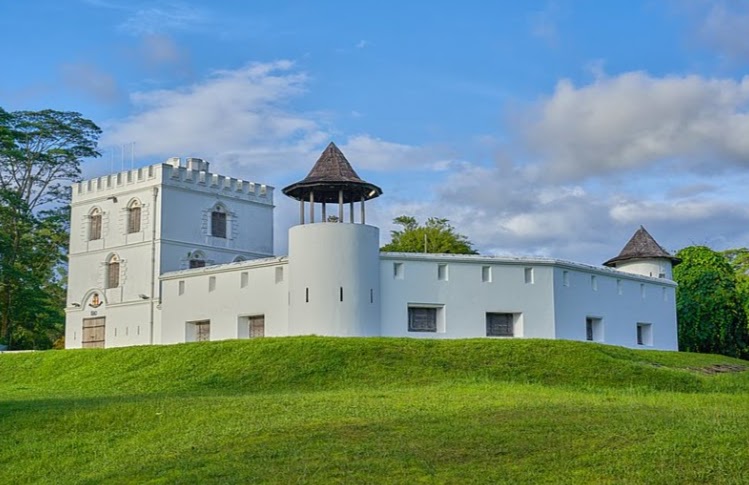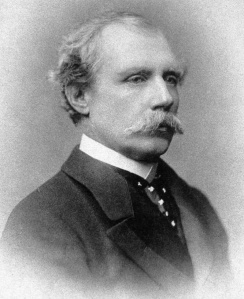Introduction
Legend has it that the fort built overlooking the river in Kuching by the second White Raja, Charles Brooke, in 1879 is haunted. Voices have been heard coming from the building at night when it’s empty. A study of the history of the fort and the area where it stands is an important part of the story.
The White Rajas of Sarawak
The largest state in Malaysia, Sarawak, situated along the north-west coast of Borneo was originally ruled by the Sultans of Brunei. In 1839 the Sultan was faced with a revolt in the area and sought the help of James Brooke a British sailor who succeeded in suppressing it and was rewarded by being installed as Rajah of Sarawak.
On the death of James Brooke, the first White Rajah, in 1868, the position passed to his nephew Charles Brooke, the second White Rajah, and on his death in 1917, to his grandnephew, the last White Rajah Charles Vyner Brooke, who ruled until 1946 when the territory became a British Colony, eventually, in 1963, gaining its independence as part of Malaysia.
Description of the Fort
It was the second White Rajah, Charles Brooke, who was responsible for expanding the territory from the small area of land around Kuching which was originally granted to his uncle by the Sultan of Brunei. As it grew, Charles built numerous forts to consolidate the area which were inhabited by warlike tribes including the Dyaks who often engaged in piratical attacks against the government.
The most important fort was that which he built in Kuching overlooking the Kuching River described as one of the best preserved British colonial, military structures in South-east Asia. Completed in 1879, its prominent position, armed with canon, acted as a defence against pirates sailing up the river. However, there are no reports of the fort ever firing its guns in anger and, according to writer S. Elegant, Rajah Brooke’s control of Sarawak was already assured by the time the construction was completed and was unnecessary.
Nevertheless, the fort did provide a refuge for the growing number of the town’s inhabitants surrounded as they were by the warlike tribes who roamed the forests. According to W.H.Treacher, first governor of North Borneo, writing in his book on British Borneo published in 1891,Kuching, as well attracting more residents had also recently undergone substantial development:
“When Sir James first arrived, Kuching was a wretched native town, with palm leaf huts and a population, including a few Chinese and Klings (natives of India), of some two thousand. Kuching now possesses a well built “Istana,” or Palace of the Raja, a Fort, impregnable to natives, a substantial Gaol, Court House, Government Offices, Public Market and Church”.
The “impregnable fort” mentioned by Treacher was built to resemble a traditional English castle with two round towers and a sturdy, crenulated square tower consisting of three floors with a courtyard surrounded by high walls containing cannon ports.
Uses of the Fort
Apart from defence, the fort has been put to various uses over its nearly 150 year history. When few people possessed watches the fort’s guns were fired as a time signal for the local population. Introduced by Charles Brooke, a gun was fired everyday at 5 AM to mark the beginning of the day, as well as on Mondays and Thursdays at noon to mark the regular meetings between the Rajah, the Resident, the Treasurer and the Datus.
Whenever the town received a visit from dignitaries, the guns were fired to welcome them, with the twenty-one gun salute being the highest honour. The Rajah received such salute on his birthday and the heir presumptive’s birthday was also marked in this way. His son’s official title was His Highness, the Tuan Muda (the Little Lord).
In October, 1952, the guns sounded welcoming the first visit by British royalty to Sarawak. The Duke and Duchess of Kent arriving from Singapore in a flying boat which touched down on the Kuching River.
In more recent times the fort has been used as a police museum and after recent renovation is currently the home of the Brooke Gallery exhibiting artifacts and history of the Brooke family who ruled Sarawak for over a century.
Naming of the fort as “Fort Margherita”
When the fort was completed Charles Brooke decided to name it after his wife Margaret. He met her in Wiltshire having just succeeded as the second Rajah. Born in Paris in 1849, a daughter of the prominent de Windt family, they married in 1869 when she was twenty. He reportedly made his marriage proposal in the form of a note which he gave to her containing the following short poem:
With humble demean
If the King were to pray
That you’d be his Queen
Would you not say nah.
They had six children three of which died, and after the last son was born they lived apart with Ranee Margaret living in London associating with men including Henry James and Oscar Wilde, and later in her cottage in Cornwall where she wrote her book “My Life in Sarawak”. However, in the early years, she lived in Sarawak with her husband taking an active role in the local community. According to one writer:
“The Ranee showed a surprising ability for interesting herself in local problems. She made friends with the women of the Dyak and Kayan villages of the interior of Sarawak, and always took pride in her husband’s work.”
She died in 1936 in London aged eighty-seven outliving her husband Charles who died in 1917.
The haunting of the fort
Legend has it that Fort Margherita, Kuching, is haunted. However, you won’t see this mentioned in any guidebooks. When visitors enter into the interior courtyard the more observant might notice that painted on the front of the door of one of the round towers is a small skull. The addition of the skull is not some random piece of graffiti which would be not tolerated, but has been put there purposely by the authorities.
Reasons for the symbol may be merely a warning for people not to try and open the door but research shows that the skull painted on the door may also be a sign recognising the old head-hunting days practised by local tribes such as the Dayaks. An ancient tradition associated with manhood and marriage prospects, head-hunting was practised for centuries and arose through inter tribe rivalries. The Brooke Rajas tried to prohibit it but the practice continued.
Does the skull symbol mark the fact that the tower was, as it is said, the site of storage for the museum of numerous human heads which had been seized from local tribes, some of which were said to be over 200 years old. The skulls may still be there, I don’t know, but legend has it that sounds resembling human laughter have been reportedly been heard coming from the tower.


